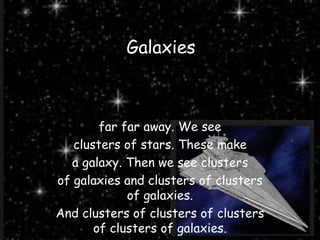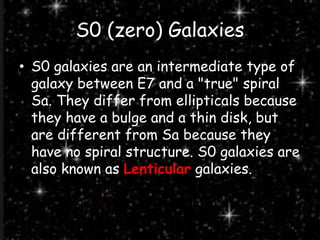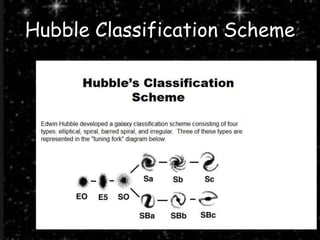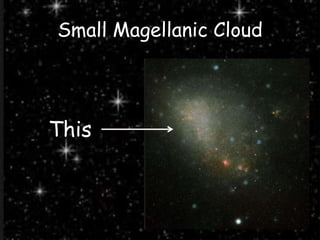The Milky Way is a barred spiral galaxy that is warped due to gravitational interactions with its neighboring dwarf galaxies, the Large and Small Magellanic Clouds. It is composed of stars, gas, dust, and contains over 200 billion stars. The Milky Way is home to our solar system and planet Earth.

























